Last month I visited London for three days as part of a week-long visit to England. Since it was a short visit I wanted to be close to everything on my list of places to see in the city, which was basically the Tate Britain art gallery. Other than that I thought I’d just let things unfold as they came and find some good cafes. As it turned out, I managed to see a lot during my stay, including the Docklands Museum at Canary Wharf and gentrified Bermondsey close to Tower Bridge; but I enjoyed just walking around the streets most of all, including a late night walk through St. James Park. I tried to avoid most of the popular tourist destinations on this trip because I wanted to see places I’d not see before. I opted to stay at Blades Hotel, conveniently situated in the Pimlico district of central London.
This is a small family-owned hotel in what seemed like a clean and quiet neighborhood. It is located on Belgrave Road, close to the Pimlico underground train station. On one of the days during my visit I walked from the hotel to the Tate Britain museum. I had read about a new exhibition of paintings by Patrick Caulfield and wanted to see it, especially since it was opening on the day I arrived. To be honest, I didn’t know anything about Patrick Caulfield before I went to the exhibit, but I had seen some photos of his paintings and I wanted to know more about them. Most of all though I wanted to see them in Tate Britain so that I could walk through the streets of London, alongside the Thames, and find my way to one of Britain’s great art galleries and cultural institutions. Tate Britain, situated at Millbank, just a short walk from the Houses of Parliament, first opened in 1897. The gallery is named after Henry Tate of the Tate & Lyle sugar company because the gallery was established from paintings that Henry Tate had “donated to the nation” from his personal collection.
Today, the gallery displays British art dating from the 1500s to the present day. The gallery is worth visiting just to see the interior of the original building, which includes an impressive central hallway with Greek-style pillars. On the day I visited the gallery, this hall was empty but the height of its ceiling and the open space made the place feel like a temple. After viewing the exhibited paintings in the surrounding hallways, I made my way to the café on the first floor, located at the back of the gallery. The café felt like it was hidden away because I did not notice any signage leading to it and I had to walk through several rooms to get to it, using the gallery map as a guide.
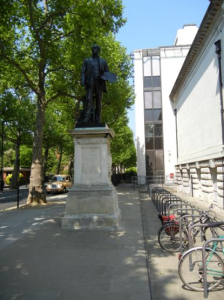
Statue of John Everett Millais, the famous English Pre-Raphaelite painter. His paintings include Ophilia, 1851-2, and others with a strong English cultural-literary theme. The statue is located behind Tate Britain.
The artist Patrick Caulfield was born in the working class area of Acton in west London in 1936 and attended the Royal College of Art in the city. He became known as a “pop artist” while exhibiting his paintings in the 1960s. Much of his artwork focuses on ordinary everyday things, places and events. Some examples from the exhibition included a painting of a nighttime view through a window into a room with a lamp hanging down from the ceiling; still-lifes of objects on tables; and bold-colored landscape views. One of my favorite pieces was a large canvas called Santa Margherita Ligure, which depicts a dark blue vase, on top of a round yellow coffee table, containing red and white roses and overlooking a coastal scene from a veranda. I think it was the cartoon-like crispness of his images and the bold color schemes he had used that really appealed to me. I also enjoyed his depiction of everyday objects and scenes that showed how anything could be made to look interesting and new, like a kind of visual jazz.
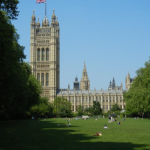
The Palace of Westminster from Victoria Tower Gardens park, on the Thames Embankment. The park is a short walk from Tate Britain.
I made a good choice in selecting Blades Hotel and Pimlico for my base while visiting the city. The hotel is in a four-story Victorian townhouse. My room was very comfortable and clean, and had a new-looking ensuite bathroom with a shower. My room was located at the back of the hotel and overlooked the conservatory, garden and neighboring houses. The interior walls of the hotel were decorated with pictures of nineteenth-century soldiers and rustic scenes of the English countryside. The breakfast room was in the basement, although a window provided plenty of natural light and a view up to street level. The breakfast was self-service and generous in its variety. At the back of the hotel there was a conservatory with comfortable chairs and information about things to do in the city. The hotel staff were very friendly and accommodating. The other guests that I met were either from other parts of Europe or the U.S.
The neighborhood was very quiet while I was there, with some restaurants and cafes within easy walking distance. One morning I met my brother and we had breakfast at a bakery-café on Tachbrook Street, the next street over from where the hotel was located. The Pimlico underground train station was a very short walk away where Tachbrook Street intersects with Rampayne, a short curved road. During my visit I also walked along Belgrave Road toward Victoria and got a bus on Victoria Street that took me to Westminster and Trafalgar Square.
For the return journey, I got on a bus at a stop on Whitehall, just below Trafalgar Square. You don’t really have to worry about missing a bus because they stop at the bus stops every 15 minutes or so. On my last night in the city I walked all the way from Charing Cross Road back to the hotel via Trafalgar Square, the Mall, St. James’s Park, Buckingham Gate (next to Buckingham Palace) and Victoria, from where I found my way back to Belgrave Road. I probably could have walked this in no more than an hour if I hadn’t stopped in a shop to buy souvenirs for my kids. I like quiet areas, so this was a great location from which to explore central London, and I will certainly be using the hotel again on a future visit to the city.
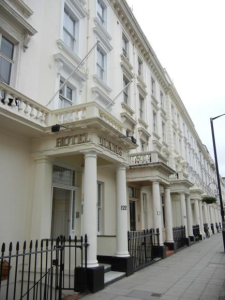
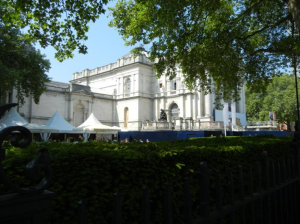

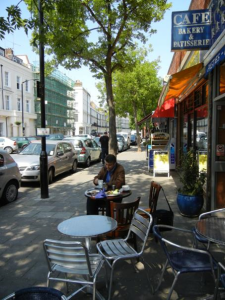
Since I wrote this article, the refurbishment work at the Tate Britain gallery has been completed. The improvements includes a new “dramatic sweeping staircase” and new exhibition displays. A newspaper article about the gallery changes can be viewed here: bit.ly/1jgVJix. I am now looking forward even more to my next visit!